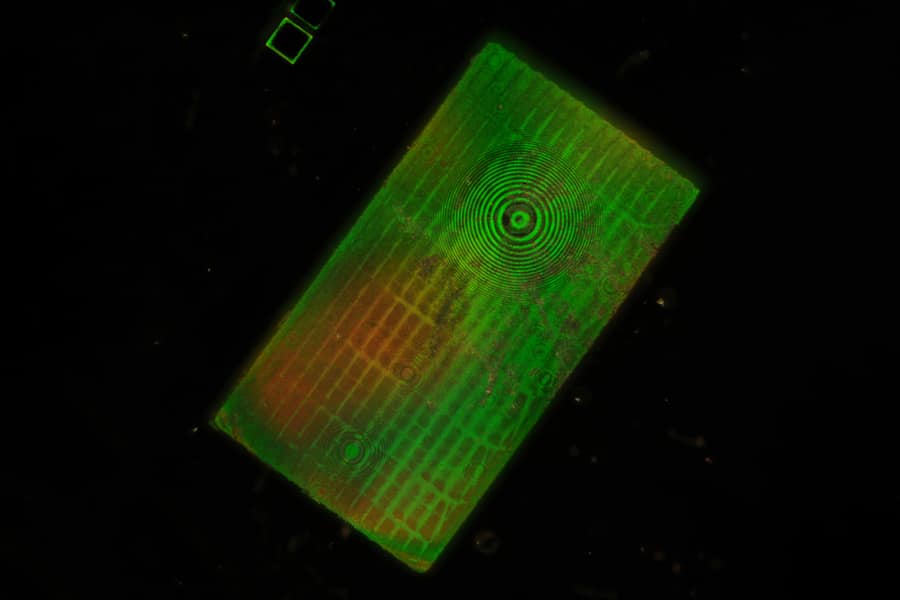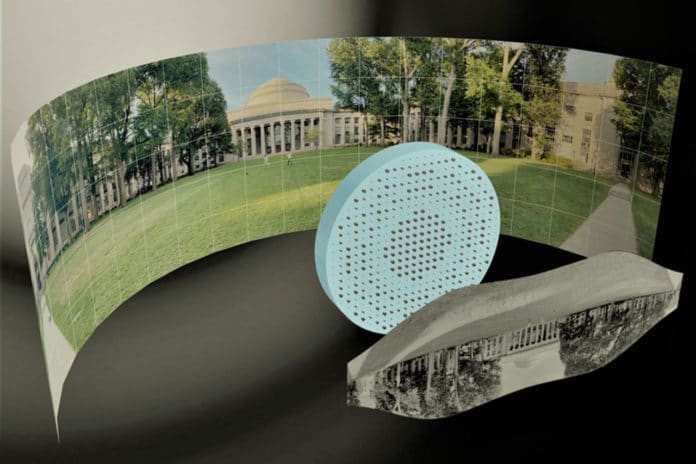Wide-angle optical functionality is crucial for the implementation of advanced imaging and image projection devices. Conventionally, a wide-angle operation is attained with a complicated assembly of multiple visual elements. Recent advances in nanophotonics have led to metasurface lenses or metalenses, a new class of ultra-thin planar lenses utilizing subwavelength nanoantennas to gain full control of the phase, amplitude, and/or polarization of light.
Photographers often use fisheye lenses to capture panoramic views in a single shot. These fisheye lenses are made from multiple curved glass pieces, which distort incoming light to produce wide, bubble-like images.
But due to their spherical, multipiece design, these lenses become so bulky and often costly to produce.
Engineers at MIT and the University of Massachusetts at Lowell have developed a wide-angle lens entirely flat.
It is the main level fisheye lens to produce fresh, 180-degree all panoramic images. The design is a type of “metalens,” a wafer-thin material designed with microscopic features that cooperate to manipulate light in a specific way.
For this situation, the new fisheye lens comprises a single flat, millimeter-tin piece of glass covered on one side with tiny structures that scatter incoming light to produce all panoramic images, similarly as a conventional curved, multielement fisheye lens assembly would. The lens works in the infrared part of the spectrum, yet the analysts state it could be modified to capture pictures using visible light.

Scientists noted, “The new design could potentially be adapted for a range of applications, with thin, ultra-wide-angle lenses built directly into smartphones and laptops, rather than physically attached as bulky add-ons. The low-profile lenses might also be integrated into medical imaging devices such as endoscopes, as well as in virtual reality glasses, wearable electronics, and other computer vision devices.”
Juejun Hu, associate professor in MIT’s Department of Materials Science and Engineering, said, “This design comes as somewhat of a surprise because some have thought it would be impossible to make a metalens with an ultra-wide-field view. The fact that this can realize fisheye images is completely outside expectation. This isn’t just light-bending — it’s mind-bending.”
The metalens is made of a single transparent piece made from calcium fluoride with a thin film of lead telluride deposited on one side. Scientists then used lithographic techniques to carve a pattern of optical structures into the film.
Each structure, or “meta-atom,” as the team refers to them, is shaped into one of several nanoscale geometries, such as a rectangular or a bone-shaped configuration, that refracts light in a specific way.
Hu says, “We’ve designed the backside structures in such a way that each part can produce a perfect focus.”
An optical aperture has been placed on the front side of the lens.
Mikhail Shalaginov from MIT explains, “When the light comes in through this aperture, it will refract at the first surface of the glass, and then will get angularly dispersed. The light will then hit different parts of the backside, from different and yet continuous angles. As long as you design the backside properly, you can be sure to achieve high-quality imaging across the entire panoramic view. We’ve designed the backside structures in such a way that each part can produce a perfect focus.”
An optical aperture has been placed on the front side of the lens.
Shalaginov explains said, “When the light comes in through this aperture, it will refract at the first surface of the glass, and then will get angularly dispersed. The light will then hit different parts of the backside, from different and yet continuous angles. As long as you design the backside properly, you can be sure to achieve high-quality imaging across the entire panoramic view.”
Tian Gu from MIT said, “It shows we can achieve perfect imaging performance across almost the whole 180-degree view, using our methods.”
Scientists noted, “the new lens can be adapted to other wavelengths of light. To make a similar flat fisheye lens for visible light, for instance, Hu says the optical features may have to be made smaller than they are now, to refract that particular range of wavelengths better. The lens material would also have to change. But the general architecture that the team has designed would remain the same.”
Journal Reference:
- Mikhail Y. Shalaginov et al. A single-layer panoramic metalens with > 170° diffraction-limited field of view. arXiv:1908.03626
